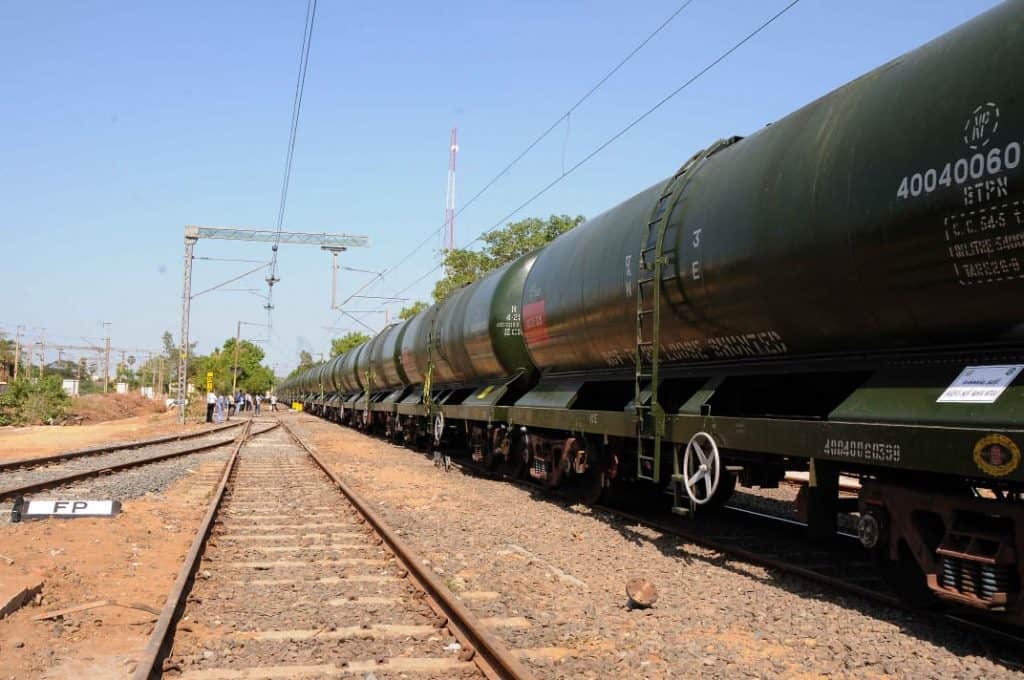Media, political cadre and scores of citizens were present at the Villivakkam railway yard on Friday morning, as the special train from Jolarpettai, carrying 2.5 million litres of water chugged in. The fact that the water train, festooned with flowers, was welcomed by hordes of people, underlines the magnitude of water scarcity in Chennai and the desperation with which citizens are looking for solutions. The train is at the centre of focus also because this is the first time in the past 18 years that Chennai has transported water.
But how will a trainload of water quench the thirst of a water-starved metropolis? Here is a quick look at the facts:
How much water is transported by the water train?
A total of 10 million litres of water will be transported everyday to tide over the water shortage in Chennai. Chennai has a water requirement of 830MLD (Million Litres a Day). Chennai Metro Water Supply and Sewerage Board (CMWSSB) claims to supply 525MLD. The 10 MLD water brought by the water train will address around 2% of the city’s water demand.
Will it not lead to scarcity in Jolarpettai if the water is transported to Chennai?
No, surplus water from Mettur is supplied to various parts of Vellore through the Vellore Combined Water Supply Scheme. A part of the surplus water is diverted to the state capital.
How does the water reach Jolarpettai?
Cauvery water from Mettur dam reaches Jolarpettai through underground tanks via pipelines. It is transported to the 50 overhead filling tanks at Jollarpettai railway station through 500-mm pipelines, covering a distance of 3.2 km. In every trip, 50 wagons with the capacity of 50,000 litres each would be filled. (50×50000 litres× four trips a day = 10 MLD).
Will water be supplied directly to Chennaiites?
Once the water train, covering a distance of 205 km from Jolarpettai to Chennai, reaches Villivakkam yard, 400-mm diameter pipes are connected to the wagon to decant the water into large containers installed at the yard itself. Water then joins the conduit that runs from Red Hills to the Kilpauk water treatment plant. The treated water is supplied from Kilpauk Water treatment plant to the northern and central parts of the city.
Water at what cost?
Each train brings 2.5MLD of water to Chennai. Four trips will be made to supply 10MLD of water to Chennai. According to the Chennai Metro Water officials, the cost of transporting the water is Rs 8.6 lakh per trip, to be borne by CMWSSB. This includes the cost of renting the rakes, fuel, labour for loading, unloading and decanting the water. However, the cost of sourcing water from Mettur and for treatment at the Kilpauk Water Works is not known.
How safe is the water that comes through these wagons?
These Bogie tank wagons are used by the Railways for transporting edible oil. However, Southern Railway officials say that enough work was done to make these wagons suitable for transporting water. According to a Southern Railways press release, a rake of 50 bogie tank wagons from Karchhia (Vadodara) of Western Railway reached Kota on June 25th this year. These wagons were subjected to steam cleaning for a period of 8 hours to get rid of internal sediments from the oil. Sedimentary remains in the barrels were scratched thoroughly and were cleaned with Moya Oil and Soda Ash, added the press release.
What else is the state government doing to address water scarcity in Chennai?
Harmendar Singh, Principal Secretary Municipal Administration and Water Supply, Government of Tamil Nadu, said that the government had doubled the number of metro water tanker trips from 6000 per day to 12000, to cater to the needs of citizens. Municipal Administration Minister S P Velumani said that the state’s Chief Minister Edappadi K Palaniswami has written to Prime Minister Narendra Modi to allot another special train for transporting water to Chennai. If that happens, we can expect another 10 MLD to reach Chennai from Jolarpettai.
Until when will the train bring water to Chennai?
CMWSSB officials say the train will continue to bring water every day to Chennai, until the city ‘receives a good monsoon.’ While that is anyone’s guess, it seems fairly certain that the train will bring its precious cargo to Chennai at least for the next three months.

Your article on how water transported on rail wagons is distributed in Chennai is excellent.
More trees cut. More loss of water and less rains.
Well written article covering all the aspects which is in minds of reader. How the bogie’s are cleaned is one important doubt which many people have. Thanks
We in kodambakkam don’t get either lorry water or metrowater. AEs never pick the phone. Apartment people are at the mercy of private tankers.
I enjoy reading your articles Laasya! Please make use of your Twitter handle as well.
Keep up the good work!
Really.. worthy one
Very informative..
Thanks for such an awesome articulated Article
We, Choolaimedu residents, face a very severe water problem. Absolutely no ground water as this place is ‘medu’.
Private tankers charge very high amount. Will the CMWSSB look into it and offer a solution. We are not comfortable with the new scheme 2
0 {As seen others views on this}